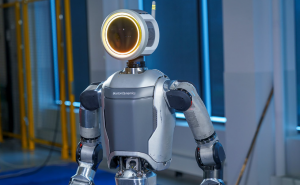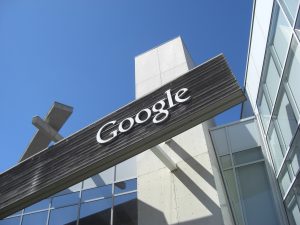Facebook Billions Powered By ‘Like’ – an emotional sensor is driving the company’s exorbitant valuation.
![]() As bizarre as this sounds, one of the most valuable innovations in technology over the last several decades is Facebook’s “Like” button. That’s what has propelled the company to a galaxy-orbit valuation for its forthcoming initial public offering, filed Wednesday.
As bizarre as this sounds, one of the most valuable innovations in technology over the last several decades is Facebook’s “Like” button. That’s what has propelled the company to a galaxy-orbit valuation for its forthcoming initial public offering, filed Wednesday.
This is not only because the word “like” is, like, the identifying word of an entire generation. It’s because computing has evolved beyond just taking directions from humans—and instead is cozying up to us and sniffing out our emotions and intent.
Advertisers are drooling. Procter & Gamble CEO Robert McDonald, while announcing a layoff of 1,600 people, said this week that the company is trimming its $10 billion annual ad budget as well because, he told analysts, “things like Facebook and Google” can be “much more efficient.”
Computing’s business model has evolved from selling hardware and software to enticing millions of users to one spot and then selling them something else. The industry has moved from the cool business of directly selling innovation to the age-old media model of selling ads—a $500 billion business.
And behind all the glitz, that’s what Facebook is. Its tons of cheap servers sitting in dark rooms store our thoughts, photos and videos, to be delivered and shared to a select group of friends, our social network.
Advertisers rightly took note of the potential. But running ads next to pictures of your buddy Johnny funneling beers at a lacrosse game is not exactly what they had in mind. Then, in mid-2010, Facebook rolled out its Like button, which transformed the company from a somewhat interesting social network into a major media player. The power of Like as an emotional sensor is what’s driving Facebook’s exorbitant valuation.
Note that no one dominates this next wave of computing—not yet anyway. Instead, lots of companies own a piece of the market, and all are trying to eat the others’ lunch.
Apple, worth $425 billion with $125 billion in annual sales, is a huge consumer platform. It keeps hardware and software tightly coupled, selling more than 100 million phones or tablets yearly. This lets it sell other stuff, like apps, and content like music and videos—and some ads. With the ability to track our clicks and location, it knows what all of us are doing minute by minute, sort of—but so far it leverages that by selling ever-better devices which we constantly upgrade.
Apple has already tried and failed to take on Facebook with a homegrown social network, Ping. But Apple is a threat to Facebook in many ways, especially since more than half of Facebook users, I’d guess, access the site via mobile phones.
Amazon, worth $80 billion with $48 billion in annual sales, sells us stuff directly. These sales are relatively low-margin, compared to software anyway. But Amazon leverages its infrastructure and 150 million users by selling excess capacity and Web services to smaller players, by selling ads, and to kick-start its own Kindle, which is now a lot more than an e-book reader. The Kindle Fire, with six million sold in the last three months, is a full-fledged shopping platform.
Google, worth $190 billion with $38 billion in annual sales, is the closest real competitor to Facebook. Google lures you to its site via its search engine and sells ads against results, paid per click. Yes, yes, Google has lots of other services, like email and maps, but basically it runs an ad platform. It’s a great business with operating profits of 35%, similar to Facebook’s.
Google+ is the next-largest social network to Facebook, and Google is scrambling to integrate your friends’ opinions into search results. Google’s Android phones are another gateway that Facebook and its users must traverse.
There are lots of other potential competitors trying to leverage our emotions. Twitter with its 140-character messaging. Netflix with streaming video. OpenTable with restaurant reservations. Microsoft with Skype video conferencing and Xbox videogames. Groupon and LivingSocial with social coupons. LinkedIn with business resumes and job search. Each provides some piece of productivity that users or businesses or advertisers will pay for. Each company that fails to dominate will end up being acquired or subsumed by the eventual winners.
Which brings us back to Facebook, which listed 2011 earnings of $3.71 billion in its IPO filing and is believed to have a potential worth of $75 billion to $100 billion—though I hear that some shares traded privately before the filing at an assumed valuation of $150 billion. Facebook doesn’t sell phones or tablets, or ship physical products or even do searches. Instead, it has a vibrant, pulsating community of 845 million people willing to share their personal lives with others. Facebook is a giant emotional locker.
That’s where the Like button comes in. The adage about advertising is that only half of ads are effective, but no one knows which half. So companies will drop $3.5 million to NBC for a 30-second Super Bowl ad. Or run Keystone Light ads on Comedy Central. They may work, but advertising—ask P&G—is an industry ripe for productive innovation. With the Like button, Facebook is like Bob Eubanks on “The Newlywed Game,” who promised contestants “a prize chosen especially for you.” Advertising’s nirvana is an ad chosen especially for you. Of all the players, Facebook is the closest to delivering.
Others will catch up. Facebook CEO Mark Zuckerberg would do well to take the billions raised from the IPO and go on the offensive. Already—via a new subscribe feature with which you can “follow” someone—it is trying to neutralize Twitter. A Facebook phone? I doubt it, but lucrative deals with other hardware players are almost a must.
My best advice to Facebook is to keep playing poker and betting big while Apple, Amazon and Google move around their chess pieces playing defense. With a potential enterprise value at 25 times sales, a lot of things have to go right for Facebook over the next five years.
{Andy Kessler a SiliconANGLE contributor also contributes to Wall Street Journal. This article is cross posted on Wall Street Journal – link here}
A message from John Furrier, co-founder of SiliconANGLE:
Your vote of support is important to us and it helps us keep the content FREE.
One click below supports our mission to provide free, deep, and relevant content.
Join our community on YouTube
Join the community that includes more than 15,000 #CubeAlumni experts, including Amazon.com CEO Andy Jassy, Dell Technologies founder and CEO Michael Dell, Intel CEO Pat Gelsinger, and many more luminaries and experts.
THANK YOU













